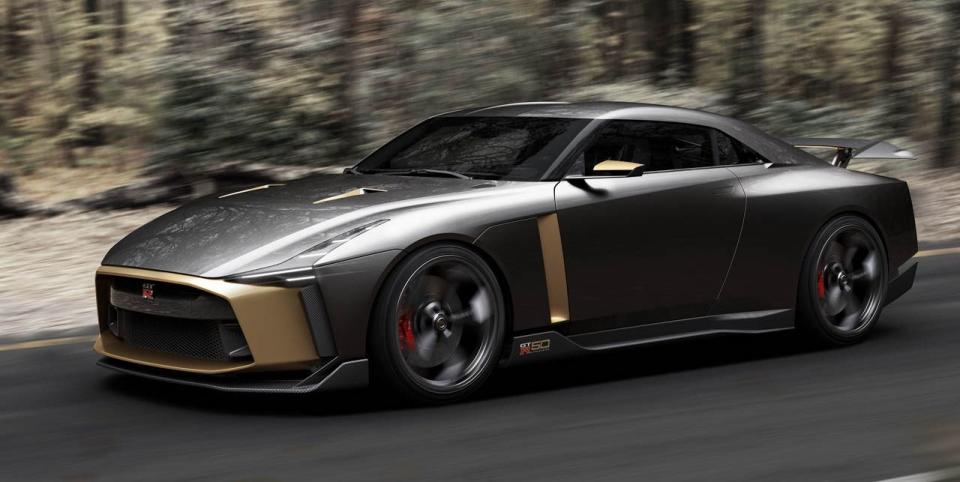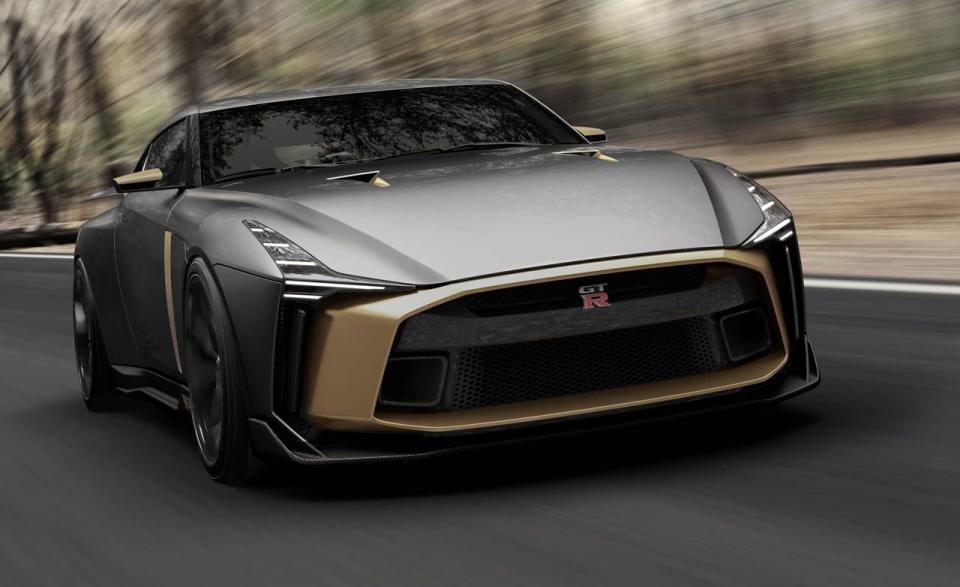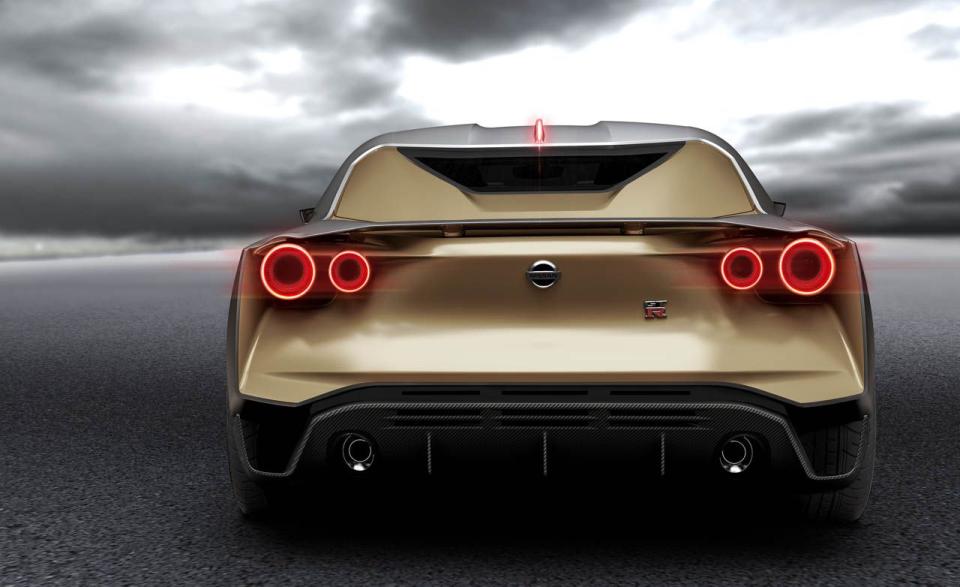Godzilla Goes to Italy: 710-HP Nissan GT-R50 by Italdesign

The Nissan GT-R is still running strong, if a little long, in its 10-year-old body. But this slick gold-on-silver rendering is our closest peek at the next Godzilla, and, we hope, the future of Nissan design. The GT-R50 by Italdesign is a one-off prototype built by the famous Italian design studio. It’s set to make its debut on the Continent in a couple of weeks.
It has been 50 years since Giorgetto Giugiaro opened his Turin shop in 1968, and also a half-century since the GT-R first appeared as a ferocious version of the defunct Prince Motor Company’s new Skyline. It matters not that Italdesign has been sketching continuously since then, while Nissan GT-R production was on hiatus from 1974 to 1988. Just look at what the two companies have done together now. This Japanese-Italian fusion borders on beautiful-no easy accomplishment for the brutish GT-R.
Yet despite Italdesign’s history of gorgeous concepts, the exterior and interior design credits go to Nissan’s European and American studios. The GT-R50 is a street-ready version of the 2020 Vision Gran Turismo, a video-game car created by the same Nissan team in London. Underneath, the GT-R50 is based on a real 2018 GT-R NISMO. The steeply sloped roof, lowered by 2.1 inches, melts into rakish C-pillars surrounding a V-shaped rear window. The effect, combined with protruding round taillights and a rear wing that juts out from chiseled quarter-panels, is that of a mid-engined Ferrari.
Riding on 21-inch wheels, the GT-R50 retains just enough of the regular GT-R’s stocky styling cues while trimming its visual bulk. Much of this newfound grace comes from stretching the body 3.7 inches and widening it another 3.8 inches. From behind, sharp vertical and horizontal creases blend into a large contoured fascia with small exhaust tips set within a simple venturi splitter. Up front, Nissan’s chromed, V-mouthed grille is gone. The flat hood takes a steep dip to a wide, octagonal opening flanked by thin headlights. The entire car manages to be square and smooth all at once, with neither aspect overpowering the other.
Fittingly, Nissan has not neglected the engine room. The twin-turbo 3.8-liter V-6 now makes a Hellcat-worthy 710 horsepower and 585 lb-ft of torque, a massive leap from the GT-R NISMO’s 600 ponies and 481 lb-ft. Larger turbochargers, lifted from the GT-R GT3 race car, work with bigger intercoolers and high-flow fuel injectors and oil jets. The crankshaft, pistons, connecting rods, bearings, and camshafts wear new part numbers, while the differentials, driveshafts, and six-speed dual-clutch transmission have been beefed up. New Bilstein adaptive dampers also are on hand.
Inside, the GT-R50 features a minimalist center stack with just three chrome toggle switches, a wide protruding metal vent, and a couple of HVAC controls. Navigation? Stereo? We don’t see anything digital other than a racing-style instrument cluster. There’s so little gadgetry on display, it makes even the Porsche 911 GT3’s stark cockpit appear overwhelming.
2017 Nissan GT-R NISMO: No More Power, but a Much Improved Interior
Italdesign Unveils Zerouno, Its First Supercar beyond Its Zeroeth
Nissan won’t say when a new GT-R will bow. But if this prototype’s design cues are any indication of what it will look like, expect the next-gen Godzilla-and perhaps future Rogues and Sentras-to get a lot more handsome.
You Might Also Like

 Yahoo Autos
Yahoo Autos 


